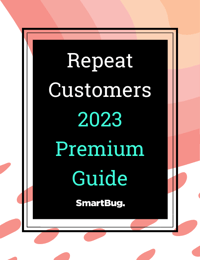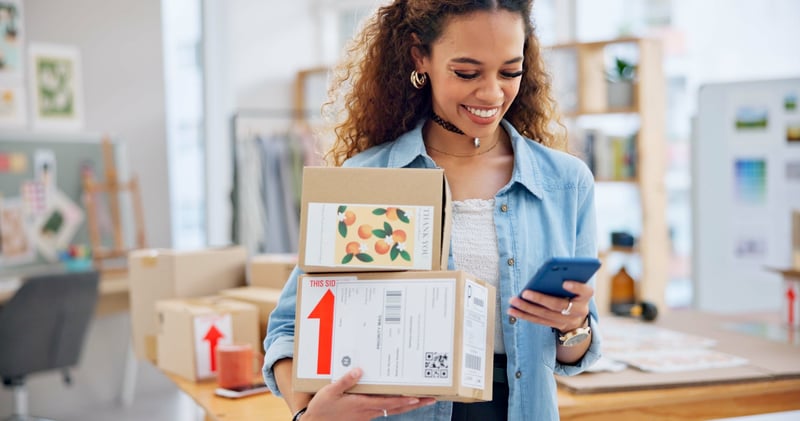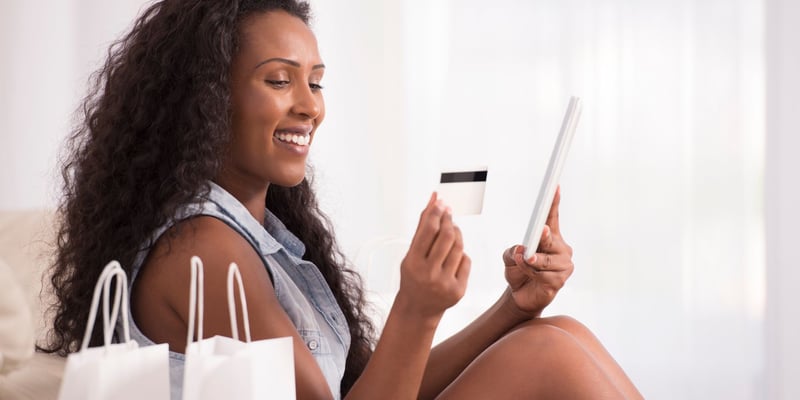
In a perfect world for e-commerce businesses, the process a shopper goes through to find a brand’s product or service would be very simple: The shopper searches Google, finds a brand’s website, selects a product from a page, heads straight to the shopping cart, and completes the purchase at checkout.
In reality, this scenario rarely happens. Why? Because the way consumers engage with brands is a bit more complex.
Most people shop around, comparing options based on prices and customer reviews, before committing. In some cases, they don’t yet know what they actually want, but they are looking for inspiration and information.
In these situations, if a potential customer is interested in your brand, the best outcome is for them to subscribe to your email list. Here’s where the power of lead nurture strategies comes into play.
What Is Email Nurturing?
Before we jump into the strategies, let’s talk first about what happens when someone subscribes to your email list. Subscribers will receive:
- Email campaigns, which are planned emails that are usually sent during a holiday or cultural event.
- Email flows or emails that are automatically sent based on behaviors of a visitor to your website.
Email flows—also known as email nurture flows—are specialized campaigns that use on-site content to provide value to potential customers. By using the data from their activity on-site, you can build a personalized email flow that builds trust in your brand and advances potential buyers toward a purchase.
Here are some of the most effective and commonly used email flows:
1. Welcome Series
A welcome series is a series of emails sent to new subscribers when they first sign up for your email list. These emails can be used to:
- Introduce your brand and products
- Provide valuable information
- Encourage subscribers to make their first purchase
Many successful welcome series introduce the brand and follow up with an email that includes product recommendations and a special offer to encourage a first purchase. You can also increase the offer value after three or four days if the subscriber doesn’t purchase.
Welcome series tend to be the highest-revenue-generating nurture automation. These series should be 5-10 emails long and sent for at least one week after the first purchase cycle duration. For example, if it takes customers of a clothing brand an average of one week to make their first purchase, the welcome series should be sent over two weeks.
To have a high-performing welcome series, it’s essential to optimize how you collect and grow your email and SMS lists.
2. Cart Abandonment Series
A cart abandonment series is a series of emails sent to customers who have abandoned their shopping carts. These emails can be used to remind customers of the items they left in their cart and encourage them to complete their purchase.
Consider sending an email reminding the customer of the items in their cart and offering a discount to encourage them to complete their purchase.
These series tend to be three or four emails long over seven days. Some brands offer a slightly higher discount with a time restraint in the final email.
3. Win-Back Series
A win-back series is a series of emails sent to inactive subscribers in an attempt to re-engage them and encourage them to make a purchase.
Consider sending an email offering a special promotion or discount to inactive subscribers in an attempt to re-engage them.
This series tends to be three emails sent over a week.
4. Upsell and Cross-Sell Series
An upsell and cross-sell series is a series of emails sent to customers to encourage them to purchase related or complementary products.
For example, if you’re a business in the food and beverages industry, send an email to customers who have purchased a coffee maker offering coffee beans or other accessories.
Upsell and cross-sell series vary dramatically in length and content. You might include helpful content about their first purchase and how an additional product would complement it. You can also include social proof about related products.
5. Lead Nurturing
Leading nurturing is a series of emails sent to leads who have expressed interest in a company's products or services but have not yet made a purchase.
With lead nurturing, you can take a few different approaches with email content:
- Provide educational content, such as articles, videos, or webinars, on topics related to the company's products or services
- Special offers or discounts to encourage a purchase
Of course, you can and should use an approach that sends both types of content at the right time.
6. Customer Onboarding
Customer onboarding includes a series of emails sent to new customers to help them get started with a company's products or services. These emails can include instructions or tutorials on how to use the product and tips on getting the most out of it. This is a great opportunity to include how-to guides or video tutorials.
7. Post-Purchase Follow-Up
Post-purchase emails are sent to customers after they have made a purchase to thank them for their business and ask for feedback on their experience. These emails can include a customer satisfaction survey or a request for a product review.
To encourage buyers to leave a product review, offer a discount on a future purchase.
Post-purchase emails are a great opportunity to build loyalty. One strategy our e-commerce experts use at SmartBug is crafting a text-based email signed by the founders of the company, thanking the customers for joining the community and giving a short background on the company and what to expect with their new products.
8. Customer Anniversary Series
A customer anniversary series is a series of emails sent to customers to celebrate their anniversary of making a purchase or becoming a customer. These emails can be used to thank customers for their business and encourage them to make a repeat purchase.
9. Customer Success Stories
Show your customers the results of your work by sending a series of emails featuring success stories from other customers who have used your products or services. These emails can include customer testimonials and photos, as well as information about how the product has helped the customer.
10. Seasonal Content
Through the year, you have many opportunities to gear your sales toward holidays.
For example, during Christmas, brands redesign email automations to be holiday-themed with special images and text to recreate the nostalgia of the holidays. This mimics an in-store shopping experience and increases conversion rates.
11. Customer Loyalty Series
A customer loyalty series is a series of emails that are sent to reward and recognize loyal customers. These emails can be used to offer special promotions or discounts, highlight exclusive products or services, or provide other perks for loyal customers.
Customer loyalty doesn’t end here, though—your brand can build personalization throughout your entire email and SMS system with loyalty programs, zero- and first-party data, personalized shipping experiences, and more.
12. Email Courses
Email courses give your customers and subscribers the opportunity to receive different educational or inspirational content over a set period of time (also known as drip campaigns). These emails might:
- Educate consumers about your products and area of expertise
- Increase brand awareness
- Show authority in your industry
- Include targeted promotions and upsell opportunities (with enough subscriber engagement data)
13. Replenishment Flows
Replenishment flows are post-purchase emails that give you an opportunity to upsell the customer without doing so overtly. This post-purchase flow may include:
- Order confirmation emails
- Shipping confirmation emails
- Thank you emails
- Feedback emails
- Replenishment (or buy-again) emails
These flows are crucial because they often have the highest open rates. After all, customers want to know the status of their delivery and often welcome the chance to provide feedback about their experience.
14. Browse Abandonment and Back-In-Stock
Browse abandonment occurs when an online shopper browses your product pages without making a purchase. At first this might seem like a missed opportunity, but you can use their browsing information to send emails reminding the person about the items they viewed as well as similar products.
Similarly, offer people a chance to sign up for emails to be informed when out-of-stock items are back in stock. This also offers an opportunity to have a new subscriber for general marketing information.
Take Your Customers on a Journey with SmartBug
Today’s shopper is a complicated one—from shopping around to comparing options based on prices and customer reviews to looking for inspiration and information, you need a way to know how to interact with them to encourage a sale and establish brand loyalty.
Find out how SmartBug’s team of e-commerce strategists and creatives turn those first-time shoppers into long-time buyers by reading Repeat Customer Guide: How to Get E-Commerce Customers to Swipe Right on Your Business.

About the author
Ryan O’Connor was formerly SmartBug’s Director of E-commerce Growth, product manager, and sales director. He enjoys helping readers learn how to solve big business challenges through consumer psychology within the constantly evolving e-commerce landscape. Over the past 10 years, Ryan has helped 1000s of DTC brands navigate challenges to grow fast through intelligent marketing. He’s not afraid to get his hands dirty, having launched his own e-commerce stores from the ground up. Read more articles by Ryan O’Connor.





















